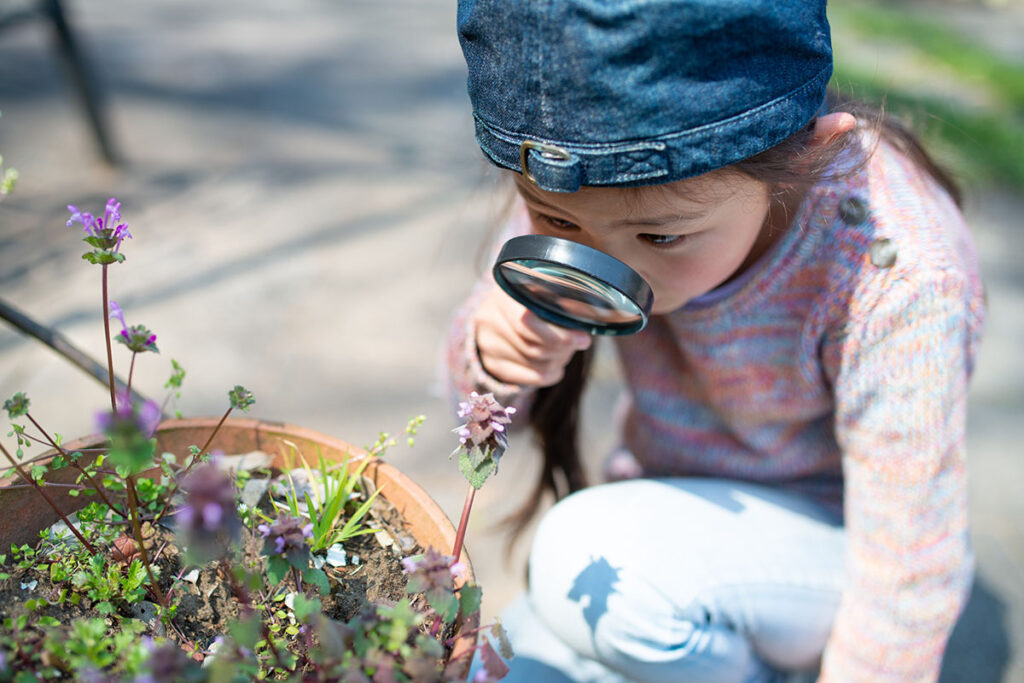Students explore the interactions between humans and the environment. The unit begins with students observing and exploring their school surroundings, asking questions about what they see, hear, and feel. Students are introduced to key concepts through literature, exploration, and collaborative activities. Stories such as Wonder Walkers by Micha Archer, The Tiny Seed by Eric Carle and Come On, Rain! by Karen Hesse guide students in making connections between the weather, plants, and human actions.
Lessons also emphasize social-emotional learning (SEL), encouraging students to reflect on how exploring their environment makes them feel and how changes in their surroundings can impact their emotions. The unit culminates in an action project where students create and share a plan to improve their school environment for both people and nature. This project empowers students to see themselves as problem-solvers and stewards of their environment.

“For my students who may not engage with abstract concepts, the real-life relevance of turning waste into soil for growing plants offers a clear, meaningful goal that they can understand and feel proud to participate in.”
“My kids have said, ‘Oh good, I like doing this,’ when we were starting the lesson each day. It’s a great topic. I also think it has made them more curious and do their own research.”
“I truly enjoyed teaching this. It has been heartwarming to see them care about other living things and the environment.”
“From my students: ‘Thank you for teaching us this lesson because if you didn’t it would be bad for our environment.’ ‘This was awesome! Can you do more? Thank you!’ ‘Thank you for helping us in taking care of the environment.'”
“What I find interesting is that students are discussing the material outside of class time. I heard students discussing the ideas before class in the hallways and even during lunch periods.”
“I love how the data was more interactive and chunked into smaller pieces. I also like how there was a way to bring all the knowledge and wondering back to come up with a conclusion to the problem.”
“I have learned ways to improve my teaching, and I have been at this for 38 years. The students are gaining a deeper understanding of what climate change is: what causes climate change, and the impact of climate change on crop yield.”
“Students really enjoyed the hands-on activity. They were very interested to learn about the different pollutants that they’ve never heard of. It also developed their curiosity about air quality and pollution. It was an eye-opener for some that they are able to see what is mostly ‘unseen’ by everyone.”
“Every lesson was so thoroughly designed, the case study design book was beautifully organized, and it helped to give my class a real-life understanding of how college/graduate-level academic research works. Being able to connect their research back to environmental issues they actually experience was simply icing on the cake. Well done!”
“Using the maps and seeing things like schools and how close they are to hazards is really cool. They may not be super connected personally, but they can put themselves in the shoes of other kids and try to relate. I know it’s working because I have a kid that just watches Netflix all day, every day and he pulled out his earbud and participated!”
“The kids become more engaged because now they are actually actively doing things. They’re really having to look for themselves. It’s not given to them on a platter, but all the resources are right there.”
“They’ve never thought about stuff like this before, and now they’re sharing it. One girl said this was the only class that she went home and talked to her parents about.”

Angelle Lailhengue, Curriculum Developer
Meagan Nelson-Palamara, Curriculum Developer
Emily Schell, University of San Diego
Roni Jones, Ten Strands
Priscilla Barcellos, Lakeside USD
Karen Cerwin, WestEd (retired)
Matt Ellinger, Designer
Elaine Klein, BSCS
Stacey Lane, Illustrator
Children’s Environmental Literacy Foundation
Elisa Alamillo, Los Angeles USD
Brooke Bismack, Laguna Beach USD
Christine Chaussee, Los Angeles USD
Kimberly Krause, Laguna Beach USD
Michelle Read, Los Angeles USD
Anne Ronkainen, Round Valley School District
Alicia Saucedo, Laguna Beach USD
Yolanda Viramontes, Los Angeles USD